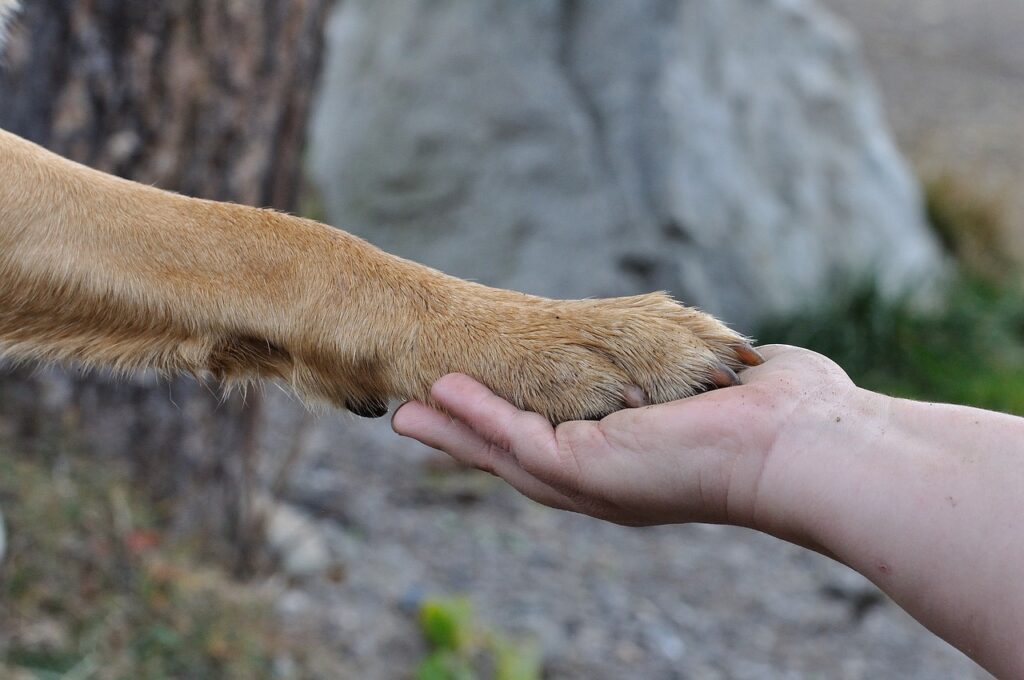Keeping Your Dog Healthy for Life
The Most Common Preventable Issues
 We can’t protect our dogs from everything, no matter how hard we try. But what if there were three very preventable canine diseases you could avoid? And no, it doesn’t take extra money or vet visits – you simply have to watch your dog and take a few proactive steps.
We can’t protect our dogs from everything, no matter how hard we try. But what if there were three very preventable canine diseases you could avoid? And no, it doesn’t take extra money or vet visits – you simply have to watch your dog and take a few proactive steps.
While most pet owners worry about diseases like cancer, the most common conditions that compromise a dog’s health might surprise you. They include obesity, dental disease, and overly long nails.
1. Obesity
You may think that wiggle to your dog’s walk is cute, but if it’s due to their weight, it’s far from charming. More than half of American dogs are overweight or obese. And, just like their human counterparts, that increases their chances of several health complications, such as:
- High blood pressure
- Pancreatitis, insulin resistance, and diabetes
- Heart and respiratory disease
- Kidney disease
- Osteoarthritis
- Cranial cruciate ligament injuries
- Many forms of cancer
Worse yet, it often shortens their life span.
Fortunately, you can take action. Learn how to monitor your dog’s body condition – you can also ask your vet during their wellness exam. Then, it comes down to the right quality food and daily physical activity.
If your dog is new to exercise or has a lot of weight to lose, start slowly and with your vet’s guidance.
2. Dental Disease
Do you love or loathe the smell of your dog’s breath? We’ve got news for you – if it smells bad, it could be dental disease.
It’s true that some dogs spend their entire lifetime with perfectly healthy teeth and gums. However, it’s far more common for them to have significant dental problems by the time they reach middle age. Unfortunately, this causes more problems than bad breath.
Dental disease causes inflammation in the mouth, shrinking gums, and tooth loss. But it doesn’t stop there. This oral infection also becomes a systemic problem when it enters the bloodstream, leading to issues with the liver, kidneys, and myocardium, and it has direct links to cardiac diseases.
The good news is that you can keep an eye on your dog’s teeth and talk to your vet if you detect signs of a problem, like tartar build-up or inflamed gums. Your vet may recommend regular dental cleanings to keep dental disease at bay. However, you can also fight the problem at home with daily brushing, rinses, or gels that can keep tartar under control.
3. Overly Long Nails
We know what you’re thinking – how can long, clicking nails put my dog’s health at risk? It’s actually quite simple: They can cause pain, making them reluctant to walk or exercise. Overly long nails can even cause lesions or sores if they rub nearby toes or legs, like a pesky dewclaw. Plus, it throws off proper weight distribution and alignment, increasing their risk of injury. For a little perspective, imagine what would happen if you wore shoes that were always too tight.
However, overly long nails are another simple problem to spot and solve; it just takes time and patience. You can often visually see that a nail is too long, but the real tip-off is hearing your dog “click-click-click” whenever they walk. Sound familiar? Don’t despair!
If your dog’s tails are too long, start by removing a tiny portion of nail once a week. This approach can take time – even months if the nails are really long – but it helps the quick recede as the nail gets shorter. The result? A positive trimming experience for your dog instead of nicking or cutting this tender tissue that hurts and bleeds.
You can also ask our certified Canine Spa Stylists to help get your dog’s nails back to a healthy length.
Once your dog’s nails get back in shape, set reminders for yourself to maintain the results. This varies from dog to dog, but maintaining a healthy nail length typically requires grinds or trims once or twice a month.

